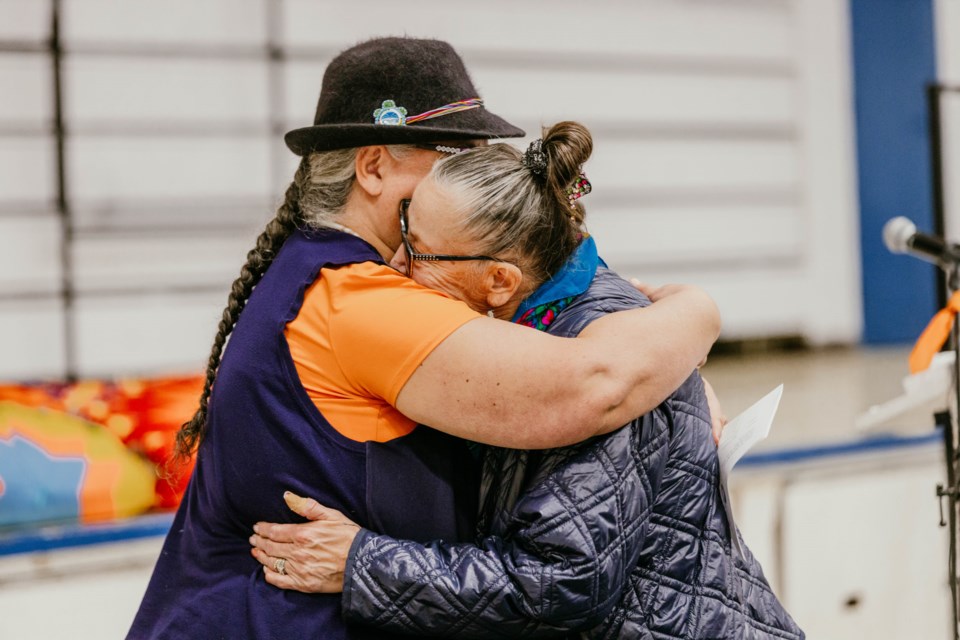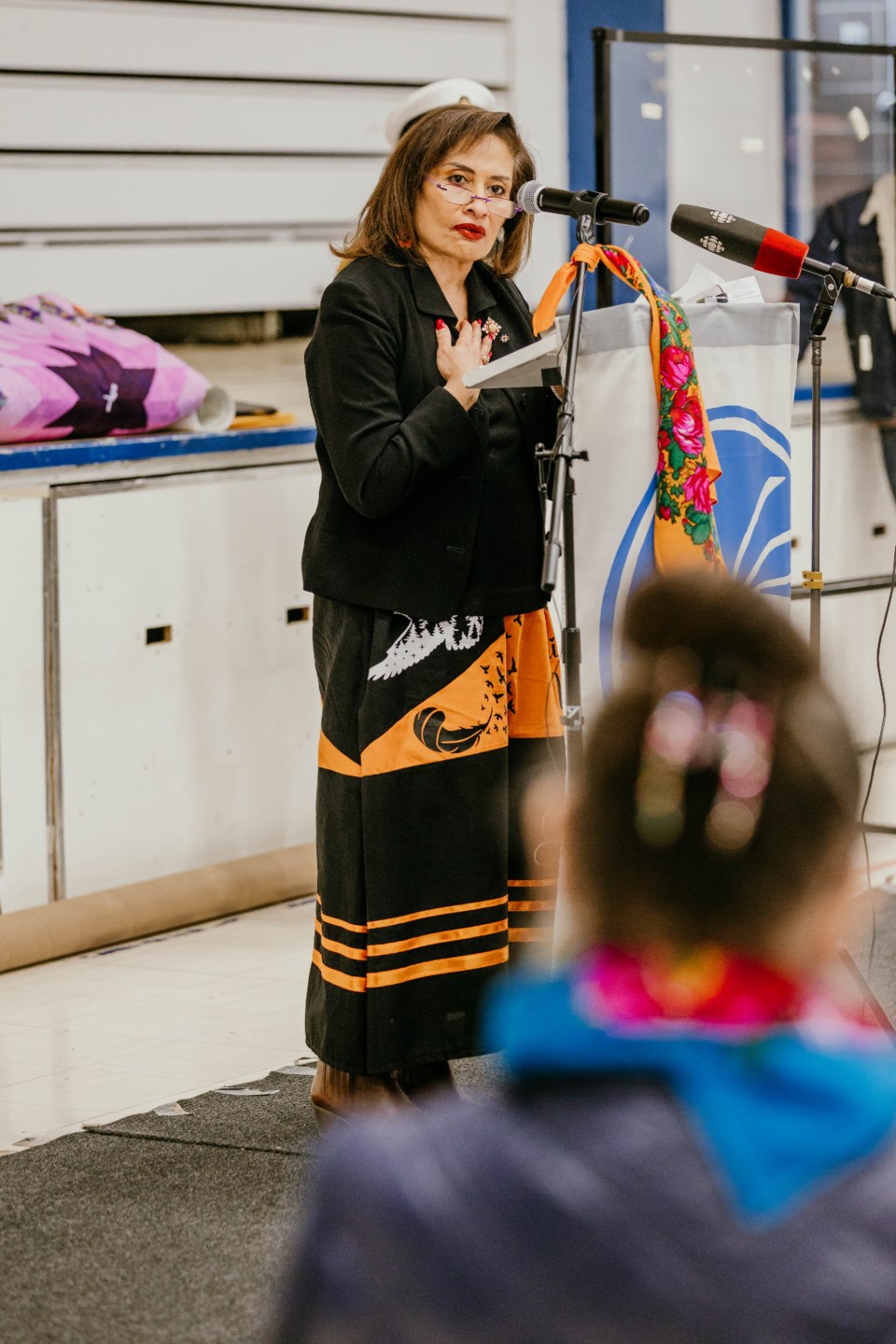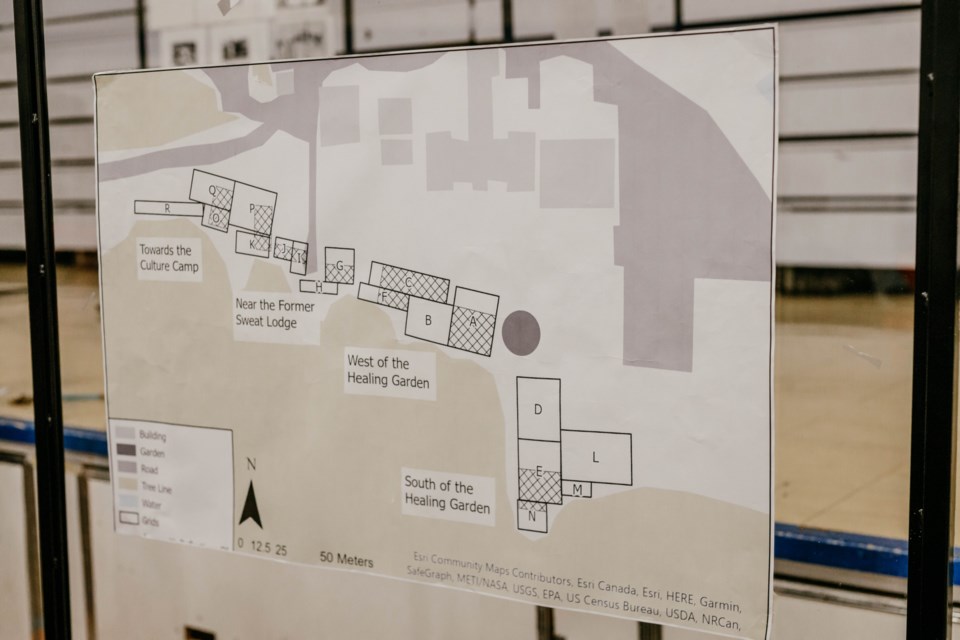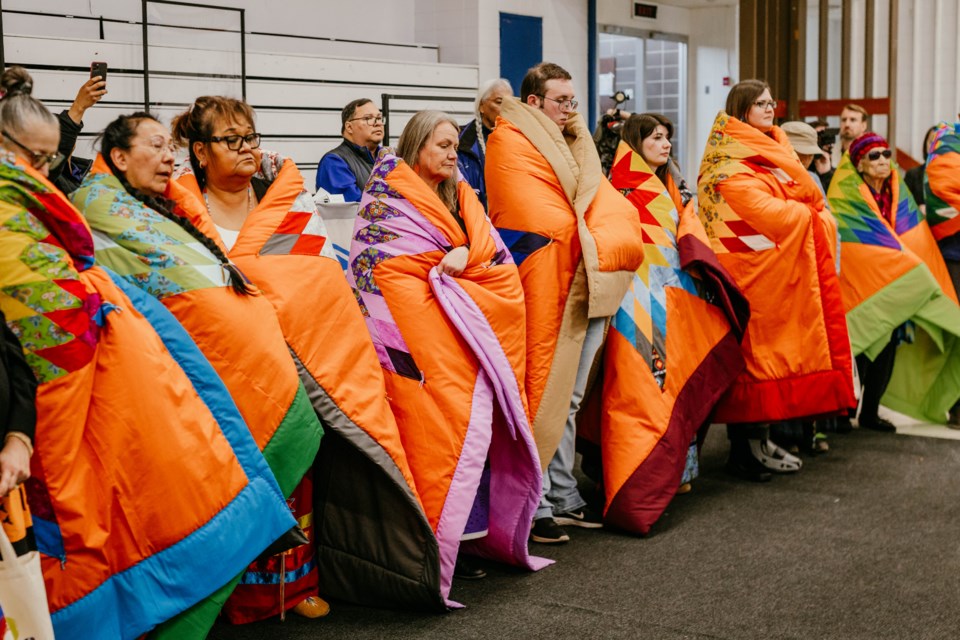ST. PAUL - The preliminary findings of the first phase of a ground search looking for unmarked graves at a former residential school in northeastern Alberta has revealed 19 areas termed as "reflections of interest." Researchers have deemed that these areas, located within 1.3 acres of land, will require further investigation.
On Wednesday morning, residential school survivors and family members, along with University nuhelot’įne thaiyots’į nistameyimâkanak Blue Quills (UnBQ) representatives, ground search team members, and dignitaries that included Alberta's Lieutenant Governor Salma Lakhani, filled the gymnasium at UnBQ to discuss the preliminary findings of a ground search involving ground penetrating radar technology that took place in August of last year.
The building that now houses UnBQ was once a residential school run by the Catholic church.
"Indian residential schools should never have happened. Children should never have died. And families should never have been left to wonder what happened to their children. But it happened. And it happened here. And now we are here," said Sherri Chisan, president of University nuhelot’įne thaiyots’į nistameyimâkanak Blue Quills.
"We're fortunate here at Blue Quills that our ancestors had a vision to transform this place of tragedy... Our parents and grandparents took over this building with the intention of restoring what was taken - our languages, our ceremonies, our teachings, our families, our futures, our children," said Chisan, who helps lead the university that now offers a variety of programming.

A place to learn
Chisan said she enjoyed hearing the happy sounds of children in attendance on Wednesday, because every child deserves to be "well loved and surrounded and embraced."
"This building stands as a monument to the children who suffered and died. It stands as evidence so that Canada and the world can never forget what happened here," said Chisan. The building also stands as a testament that "our people can create supportive, positive, transformative learning spaces."
Reflections of interest
Dr. Kisha Supernant, director with the Institute of Prairie and Indigenous Archaeology at the University of Alberta, summarized the findings of the report. She had been on hand during a portion of the ground search that took place in August, along with the team from the institute.
"We searched the grounds based on knowledge shared of survivors and families - places they wanted us to look," explained Supernant.
The team used ground penetrating radar, along with drones to explore the areas. Ground penetrating radar sends a wave into the ground and reflects things back.
"What we're looking for is changes. This is not a perfect technology," acknowledged Supernant. But the data does help narrow down areas that look like they could be graves or something similar.
Because the search was not done near a cemetery, and there was no ground penetrating radar from a cemetery to compare results to, different terms are used to describe the results. The term "potential unmarked graves" is not used, rather the term "reflections of interest" is used, said Supernant.
When looking over the results of the ground penetrating radar, two separate people would look at them and look for traits - or shapes that are known to be associated with graves in other cases. "When two people found those, we identified a reflection of interest," said Supernant.
She further acknowledged that, "We know that survivors know that things happened here," and, "We haven't looked everywhere... not every area that survivors know things have happened is suitable for this technology."
In total, within the area searched, which was about 1.3 acres of land, there were 19 reflections of interest noted. These areas warrant further investigation, but there is not enough information gathered to term them as unmarked graves, "so we do definitely need to do further work," said Supernant.
"We're not here to validate what survivors already know. We know that you know," she said. Rather, the team is working to find locations where commemorations and further work can happen in the search for "justice and accountability."
Among the dignitaries in attendance were Chief Greg Desjarlais from Frog Lake First Nation, and Chief Gary Lameman from Beaver Lake Cree Nation, along with Kehewin Cree Nation representative Charlene Gadwa. Elders and residential school survivors were also invited to share their stories.
Kimberly Murray, the Independent Special Interlocutor for Missing Children and Unmarked Graves and Burial Sites associated with Indian Residential Schools, was also in attendance, and spoke to those gathered.

Lieutenant Governor Lakhani was the last guest invited to the podium to speak on Wednesday morning.
"Treaty relationships are an essential part of the Crown in Canada and something I am deeply committed to honouring," said Lakhani. "I am doing my best to learn, to listen, and to encourage everyone who shares this land, that we are all partners in a fundamental, living agreement between peoples."
She added, "There are far too many people among us who are living with the deep wounds and inter-generational trauma brought by the horrific and cruel residential school system, and the burden of grief at losing so many young, beautiful souls is too much for anyone to carry alone."
A support team is on hand for those who need someone to talk with throughout the week. A fire was started on Tuesday night to burn for four nights and four days. Tours of the building, along with a schedule of other events, including ceremony, are set to take place until Saturday morning.
More to come...
RELATED STORY - Phase one of ground search takes place at former Blue Quills residential school





